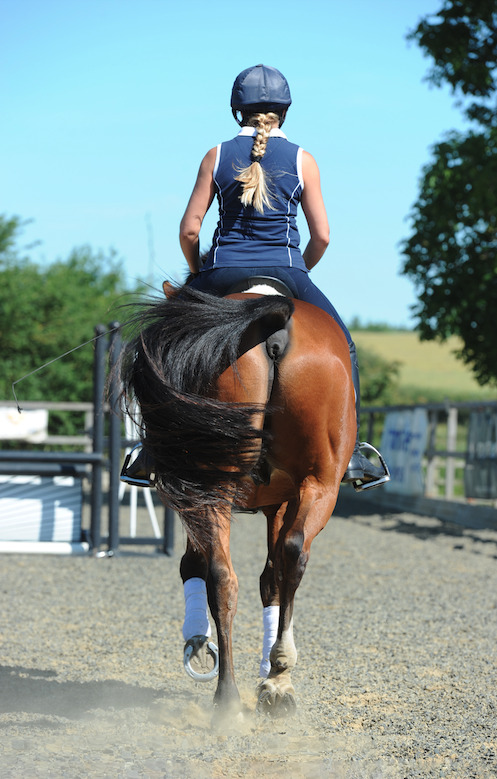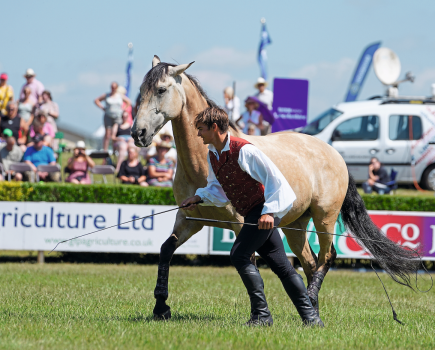Most horses find it easier to work on one rein than the other. International grand prix dressage rider Levi William Hunt has the following three exercises to help you work on your horse’s straightness.
If your horse falls in or out through the shoulder on a circle or in corners, drifts to one side when approaching a jump, or feels heavier on one rein compared to the other out hacking, this is often a sign that one side of his body is overruling the other.
Of course, rider balance and the fitting of your tack contribute to your horse’s straightness, so make sure these are correct first.
Exercise 1
We often ride horses on the track alongside the arena fence, but this can make your horse rely on the fence line when it comes to staying straight.
Riding away from the fence line gives you an idea of how straight your horse is and how much he relies on the fence.
- When you warm up, do it away from the security of the outside track. Even riding just 1ft off the track will highlight which bend your horse prefers. Identifying this is the first step to fixing it.
- If left bend is his preference, the horse will typically fall out on the left rein and fall in on the right rein — and vice versa.
- To stop him falling out, keep your outside leg on the girth and get him reactive to the leg so that it creates a barrier between him and the wall.
- To prevent falling in, when you change the rein you have to keep him reactive to the leg that he would fall through.
Exercise 2
Once you’ve identified and improved your horse’s straightness, explore the arena using the diagonal lines, quarter line, centre line and three-quarter line.
- Use visuals in front of you to draw you forwards to a goal straight ahead, such as an arena letter or a tree in the distance. Looking down will exaggerate any wobbles or crookedness, so keep your eyes up and ahead.
- Pay attention to your hands, making sure they are parallel in appearance and feel. You are the steering wheel and your job is to keep everything level. Even if the horse doesn’t feel level himself, he will begin to follow your lead.
Exercise 3
The final step to achieving straightness is practising leg-yield.
- The most helpful thing you can do to even up your horse is to not just stop him from falling through his weaker side, but to actually push him sideways away from it.
- Apply your leg at the girth, and as you trot down the line, stay straight in your posture and move your horse sideways away from your leg.
- If your horse is particularly reluctant to move sideways then widen the rein that you are trying to head towards to help open up that side and encourage him into it.
- Leg-yielding sideways in both directions is important, but priority should be given to the more difficult side so that he starts to supple up.
- Working your horse in this way will help to limber him up and break down the barrier of stiffness that causes that feeling of unevenness in your hands and around your legs.
Top tip: don’t forget the halt!
Halting and looking at where your horse rests his head can tell you a lot about his favoured bend. Widen your hands until your horse can feel an even rein and you can see a symmetrical image of his head.
This is a great way to explain what you want without the hassle of being on the move.










